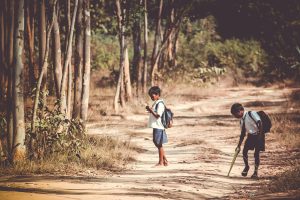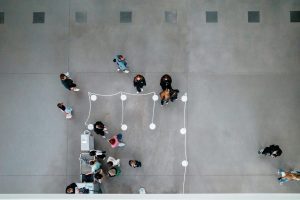Hybrid Field Trips: Real and Virtual Exploration
Are you tired of the traditional field trips where students simply visit a location, listen to a lecture, and take a few pictures? Have you ever wondered if there was a better way to engage your students in learning outside of the classroom? Well, look no further than hybrid field trips – a combination of real and virtual exploration that has been gaining popularity in recent years. In this article, we’ll explore the concept of hybrid field trips and how they can enhance the learning experience for students of all ages.
The Evolution of Field Trips
Since the inception of formal education, field trips have been a staple in the learning process. It provides students with the opportunity to step out of the classroom and into the real world, making learning more interactive and memorable. From visits to museums, historical sites, and businesses, field trips have always been seen as an important supplement to classroom instruction.
As technology has advanced, so has the concept of field trips. Virtual field trips, which involve using technology to visit real-life locations from the comfort of the classroom, have become popular in recent years. While they have their own benefits, they also have some limitations. This has led to the emergence of hybrid field trips, which offer a combination of real and virtual experiences, taking the learning process to a whole new level.
What Are Hybrid Field Trips?
Hybrid field trips, also known as blended field trips, combine both physical and virtual elements. These trips start with a real visit to a location and are followed up with virtual activities and experiences. For example, students may visit a local farm to learn about agriculture and then virtually explore a farm in another country, comparing and contrasting the two experiences. This combination allows for a more complete and immersive learning experience.
The Benefits of Hybrid Field Trips
Hybrid field trips offer numerous benefits that make them a valuable addition to any curriculum. For starters, they allow for a more flexible and personalized learning experience. With virtual components, students can explore at their own pace and revisit areas of interest. Additionally, hybrid field trips can be more cost-effective, as they eliminate the need for additional transportation and accommodation costs.
One of the biggest advantages of hybrid field trips is the ability to bridge the gap between theory and practice. Often, classroom learning can feel disconnected from the real world, but hybrid field trips provide the opportunity for students to see concepts in action and make real-life connections. This not only enhances their understanding but also sparks their curiosity and interest in the subject matter.
Creating Successful Hybrid Field Trips
While hybrid field trips have numerous benefits, they require careful planning and execution to be successful. The first step is to have a clear learning objective – what do you want your students to learn from the experience? This will help guide the selection of locations and virtual activities. It’s also important to ensure that both the real and virtual aspects are aligned with the curriculum and relevant to students’ learning.
Another crucial factor is communication and coordination. Hybrid field trips involve various stakeholders, including teachers, students, and possibly external organizations. It’s important to establish clear expectations and guidelines to ensure a smooth and successful experience for everyone involved.
In Conclusion
Hybrid field trips offer an innovative and engaging way to enhance the traditional field trip experience. By combining real and virtual exploration, students can gain a deeper understanding and appreciation for the subject matter. With careful planning and coordination, hybrid field trips have the potential to make a significant impact on students’ learning and overall educational experience.










